What was built over a century ago has shaped today’s country, by promoting places to live or industries to work in. But don’t assume that the current network will be ideal, or indeed sometimes even relevant, to the future needs of the nation. At the very least, it will require development and adaptation.
It is essential to plan now for the decades to come, to transition progressively and effectively to the railway of 2050 and beyond.
Only a few per cent of the existing infrastructure is renewed each year - and new lines take decades to develop, authorise and construct.
At the same time, railway equipment and infrastructure is being renewed every week and will largely still be in service in 2050. New tunnels or structures, by-pass lines or whole new routes will be in service a century after that. So what is being done now is already shaping the future.
Even with good current infrastructure management, the network is not capable of meeting the needs of 2050 and beyond. It will require a programme of sustained and high-quality investment to transform it and realise its potential.
Added difficulty comes in the short term from the lack of skills development, through (by world standards) an indifferent education system compounded by the practice of contracting out (which has diminished corporate core knowledge capability).
Some global trends are predictable, even if their exact timing and extent are not. These ‘mega-trends’ will affect all developed nations and so are an essential starting point.
Their implications for rail as a viable transport mode are threefold. First, and most important, is their impact on the economic and social activity of any society, and therefore its transport needs. Second is their impact on the competitiveness and complimentarity of rail as a specific mode. And third is their impact on the sustainable provision of rail technical systems and infrastructure, and its effective operation. These are some of the most significant.
THE RISE OF ASIA
The remainder of the 21st century is likely to be dominated economically by the rise of Asian countries as manufacturing and then (increasingly) knowledge industry leaders. This is as true of India and South East Asia as it is already of Korea and China.
The established leading economic blocs of Europe and America will need to compete through investment in research and development, advanced manufacturing and other future technologies, and particularly in knowledge creation.
No country, let alone a single city region, can prosper alone - connectivity, both physical and virtual, between knowledge and industrial centres within the country and across its national borders will assume ever greater importance.
There are also implications for railway systems and equipment supply chains, both through competition for standard products from Asian companies as well as their acquisition of European companies and intellectual property. In turn, the continuing consolidation of the latter into larger organisations, to respond to the market challenge from the East, is inevitable.
The building blocks of railways - whether trains, smart systems or infrastructure - will become increasingly standardised and available globally. Any policy of devising national special standards and products is doomed to render that railway unaffordable.
Instead, skills will need to focus on integrating (and also adapting and life-extending) new standard systems and products into existing (non-standard) infrastructure cost-effectively.
URBANISATION
Irrespective of short-lived pauses (for such as the current health pandemic), the millennia-long drift towards cities which has been accelerating since the industrial revolution will continue.
The economic efficiency from centralisation of manufacturing continues, and has been joined by the recognition of similar efficiencies for ‘creative production’ which happens through teams working closely together more than from individual lone effort.
In any country, the centres of excellence will become increasingly concentrated, and (without appropriate mobility) mainly in capital cities. As a matter of public policy, it will be desirable to ensure excellence centres are spread more widely.
Apart from a very few mega-cities, no single city will have the scale to focus on more than one or two areas of wealth-creating skills and to develop them sufficiently to compete in a trans-national or global market. Even in London, Europe’s only mega-city, only financial and legal services industries are of sufficient scale and depth to be world-leading wealth-creating industries.
The consequence will be the rise of the ‘centre of excellence city’, which to prosper will need effective connectivity to cities with complementary skills. Examples can already be seen in the multiple medium-sized cities of the Rhine-Ruhr region of northern Germany or the Rondstatt of the Netherlands.
The ‘Northern Powerhouse’ region of England will become such a collective. And the cities west and south of London, from Bristol round to Portsmouth, will need to organise similarly if they are to avoid being the decaying fringe of the London region.
Only together will they have the scale of skills to compete globally. And so their mutual connectivity, and with the national corporate specialists in London, will be vital.
The social attraction of urbanisation is founded on the concentration of organised leisure activity, from participatory and spectator sport to cultural events and centres. Added to that, secondary and tertiary healthcare is rapidly concentrating similarly on centres of excellence, both from an affordability factor of infrastructure provision and the human skills practicality of specialist training and service delivery.
All these factors drive the need for sufficiently good mobility both into and around the city areas and between cities, without which urban decay will be inevitable irrespective of any short-term financial subsidies.
DIGITALISATION
The 2020 pandemic has accelerated the previously very slow trend towards personal computer-based remote working and retail activity by probably two decades in a year. It is most unlikely that at the end of this pandemic, office work or physical shopping will revert to the previous state, but equally absurd to predict their complete demise.
Leading industrialists and human factors specialists have noted that remote working can be efficient in replacing communal office work for a percentage of the time, especially for those with established personal and professional relationships. However, over time those relationships degrade, new staff are not developed, and (vitally) the soft skills of shared endeavour, team spirit and creative team thinking reduce.
The social and economic value of ‘commuting’ has been challenged by some, but this is muddled thinking. Human endeavour is collective.
Even the most connected and agile young will continue to come together physically in shared workspaces - the era of the lone genius inventor is long over. Even if each generation throws up its Einstein, it is only with those around them that genius is developed into wealth-creating activities.
There will be some who discover that they could work from home or the beach in perpetuity, but who may quickly find that their livelihood has been off-shored to someone similarly skilled in a lower-wage economy elsewhere or simply put out to tender in a race to the bottom as companies have no emotional investment in them.
The future will certainly be different. Office (or more accurately shared-space) work will die as a Monday to Friday ‘9-to-5’ activity, to be replaced by more flexible working around core hours during a shorter week - with Monday and especially Friday attendance greatly reduced.
Only a proportion of city employment is in offices, ranging from around 35% in major financial centres such as London to more typically 15%-20% in more typical cities. This format does, however, support a significant number of other service employment roles - ranging from office security to sanitation and transport, which will continue.
Most people, living in cities and their suburbs, will still work in centralised facilities - including health care, manufacturing, service and retail sectors. Therefore, effective short-distance city mobility will remain as essential as water and sewerage.
Routine business meetings and contact will continue to be carried out ‘virtually’ perfectly well, but activities ranging from more complex group discussion and business development through to establishing and fostering personal and contractual relationships will continue through physical meetings.
Travel for business will therefore reduce greatly. But it will, by definition, be for important reasons, and therefore expectation of travel quality and dependability will be high.
Retail activity will divide into two main classes. The major one will be the replacement of physical shopping for ‘routine’ purposes by online purchasing, leaving a smaller more boutique activity of shopping as a leisure experience.
Not only will this have a significant impact on the nature and make-up of shopping centres and streets, as they change to become leisure ‘experiences’, it will also drive a continuing major expansion in small package distribution logistics.
Likewise, digitisation of railway systems will enable the drive to further automation of many activities, from ticketing and billing through to asset management, requiring sustained investment in emerging technologies overlaid progressively on an historic infrastructure and necessitating major changes in skills and working practices.
CHANGING DEMOGRAPHICS
Life expectancy of the population is increasing, although there is some evidence of a limit - not least due to increased obesity. Simultaneously, the developed world has experienced a sustained gradual decline in birth rate, more than offsetting the reduction in infant mortality.
The combination of these factors will continue to lead to a steady increase in the ‘healthy aged’ population, compensated for by inward settlement of younger adults from the less developed world.
While in Britain this has stabilised the proportion of working to retired people, rapid population growth as a consequence is stretching all types of established infrastructure.
The increasing elderly population can be expected to gravitate to city areas for access to healthcare and social facilities, while having the time and income to travel widely for leisure.
Meanwhile, limitations on the acceptable density of urban dwelling, and the desire for ready access to public and private open space, have been brought back into focus by the current health pandemic.
Therefore, the trend towards densification of cities will stop, and if anything be reversed - with the consequence that cities will seek to expand horizontally more than vertically.
Industries, including the railway sector, will invest in mechanisation and automation to reduce the need for human activity, accelerating the already well-established trend of elimination of semi-skilled office or assembly line workers. The next phases will be about replacing many ‘professional’ lone worker roles - the people who thought they could work from home.
In reality, many of the categories of work that will thrive are the close-contact but not highly paid population-serving industries. These are the very people who will need to travel to a workplace. But, being modestly paid, cost will be very important.
At the same time, the city population is likely to spread over a greater geographical area to limit high-density living, and so will require faster transport to avoid extending acceptable travel time.
RISING CONSUMER EXPECTATION
Increasing customer expectation is a trend which is both continuing and universal. It is reflected in all aspects of personal retail transaction - from response times to orders, availability of choice, and action on poor service.
One aspect of globalisation of travel is that people experience products and services that are novel to them but normal in other nations, and that too raises expectations. For example, Swiss and German companies now offer Japanese-style heated and washing toilets in their home markets, to satisfy a demand from consumers who have experienced the standards of hygiene considered normal in the Japanese culture.
Another aspect of rising public expectation comes from recognition of the health-damaging impact of poor city air quality, driven by a combination of road transport and buildings’ heating and cooling systems.
The current pandemic has extended this to other aspects of public space hygiene, from air-conditioning quality and filtration to cleanliness of surfaces such as seating and handrails. This is as true of public transport provision as every other public experience.
ENVIRONMENTAL SUSTAINABILITY INCLUDING CARBON
The drive to zero net carbon is but one aspect of a wider sustainability agenda.
While governments will encourage and incentivise cleaner cities through elimination of road transport exhaust carbon emissions, a viable alternative fuel to diesel for heavy road transport has yet to be developed.
We know that few sources of renewable energy are suitable for providing guaranteed base load electricity, other than tidal, nuclear or hydroelectric - two of which are geographically dependent and the other technically and culturally problematic.
What is certain is that the cost of energy, however generated, will rise - giving competitive advantage to any company, goods or service which consumes less.
Reliance on battery electrification for road transport will require very high cost investment in charging infrastructure, as well as challenging the world’s ability to source and manufacture the batteries themselves.
Battery production will continue to develop, but will be measured increasingly in terms of its sustainability - not only through the carbon emitted in battery creation, but also through the rapid depletion of finite world resources of key materials. ‘Off-shoring’ carbon-creating manufacture will in time become morally unacceptable.
Vitally, car and van electrification will not address many aspects of air quality in cities, such as tyre particulates which are already becoming unacceptable.
Whole-life sustainability - the ‘circular economy’ whereby greater value is placed on reusable rather than single-use constituent materials - has implications for every aspect of living and built products.
One is reducing the acceptability of frequent replacement of assets rather than their careful upgrade, refurbishment or life extension - whether personally or publicly owned.
AIR TRAVEL
Air travel is (and will continue to be) an innately low-capacity but high-speed transport mode between regions.
Electrification of short hops to connect outlying (often island) communities looks likely, but the laws of physics for traditional short-haul air travel look more challenging.
Meanwhile, the amount of carbon emitted on any air sector is heavily skewed to take-off, and short-haul air will continue to perform less well than electric rail from an operational carbon perspective.
But if the current carbon cost of railway infrastructure - build, renewal and maintenance - is added in, then the argument that rail is greener than domestic aviation is not clear.
Long-haul air travel will only slowly return to pre-pandemic volumes over the coming decade, but therafter may be expected to continue to expand. The economics of long-haul air travel will remain dominated by high-value business and cargo-hold ‘belly’ freight.
The number of European hubs where significant long-haul networks will be accessed will reduce, and in Britain only Heathrow has that potential because of its positioning on the axis to North America.
And while the passenger volumes are low in railway terms, dependable effective rail connectivity will be needed if cities outside London are to be ‘visible’ to global leaders.
ROAD PASSENGER TRAVEL
With regular proximity to re-charging/refuelling facilities, short-distance public transport (bus and coach) could reasonably and practicably become powered by battery, hydrogen or similar fuels.
Perhaps the great opportunity is to establish a network of high-quality and guaranteed connection feeder services into rail hubs, as an efficient and cost-effective way of connecting medium-sized towns away from the main network.
Examples can begin to be seen where integrated timetabling, ticketing and branding produce a town-to-city journey that starts with a rubber-tyred vehicle, but where the main journey is in a steel-wheeled one, sufficiently attractive and genuinely seamless to provide an alternative to the private car.
Car travel itself will change as the next generations decline the financial burden of personal ownership.
While electrification of regular and relatively short-distance road trips will be practical with small battery vehicles, acquiring an expensive vehicle with the long-range ability for infrequent journeys will cease to be common - more a hobby activity for enthusiasts.
Furthermore, the responsibility for even a short-range car will become more of a burden for the significant proportion of people without access to off-street parking and recharging facilities.
The attraction of MAAS (Mobility As A Service) will rapidly increase. Fewer people will own a vehicle that is used only a fractional percentage of the time, when one can be summoned by app (either manned or more likely autonomous) as and when needed, and similarly sent away at the end of a journey.
One consequence would be the increase in accessibility of rail stations as parking becomes unnecessary, replaced with manned or unmanned pick up and drop off.
However, the business of station parking as a revenue stream will also reduce greatly, to be replaced with useful facilities - whether parcels and packaging, retail, leisure or serviced meeting rooms, or even green space.
Long-distance road travel will become greener through electrification, but it is far from clear how it will be easy or convenient. The powertrain required will at the least be large, expensive, and time-inefficient to service.
The rented long-distance (potentially autonomous) electric car will still be attractive for family groups and those with heavy equipment or luggage, but continuing its currently dominant use by one or at most two people will ultimately depend on price and convenience compared with rail.
Therein lies rail’s opportunity and threat. If it remains difficult to access and expensive at the point of use, there will continue to be road alternatives with similar operational carbon footprints.
CLIMATE ADAPTATION
As well as changes in temperatures affecting economic sectors as diverse as agriculture and winter sports, the forecasting demonstrates increasingly extreme weather-related events (both the frequency and power of storms) over all seasons.
This challenges the standards to which new infrastructure is designed, but also has more and greater implications for the existing asset base - from housing and utilities to flood defences and transport.
It may be anticipated that a sustained effort of retrofit and upgrade to existing assets will absorb much of the funding available for managing the existing built infrastructure.


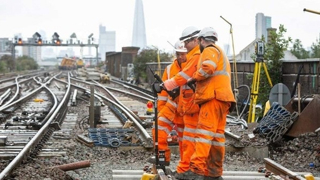
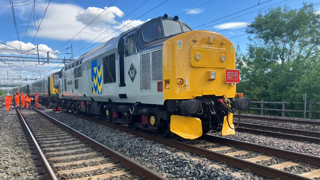

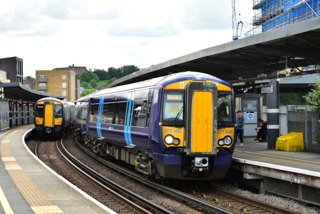
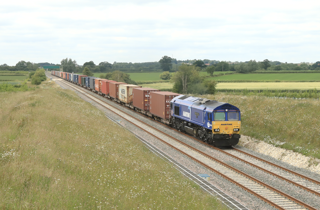







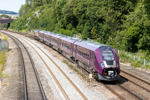


Login to comment
Comments
No comments have been made yet.